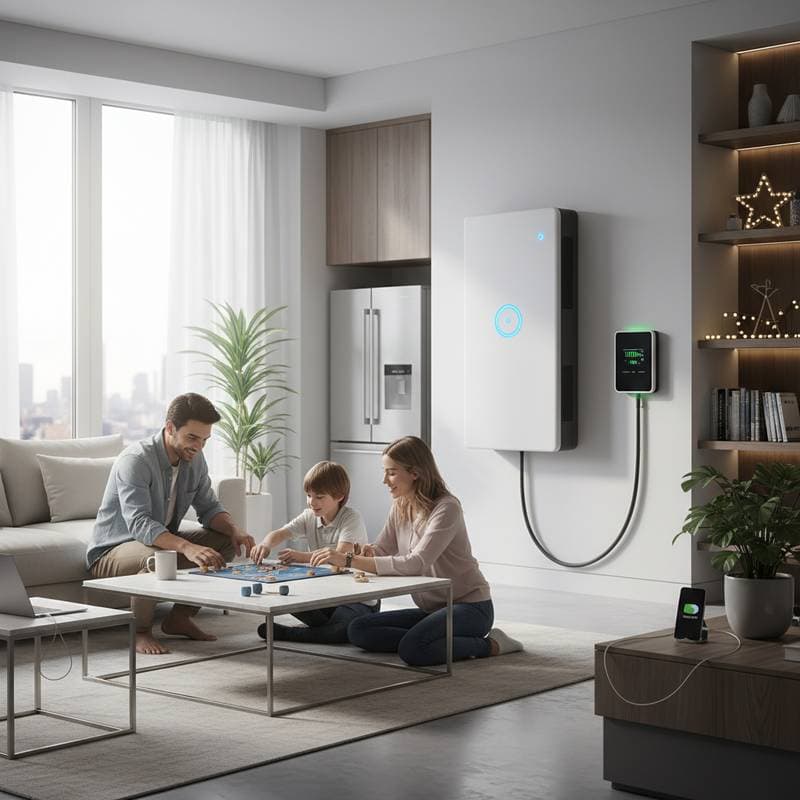Kitchen Remodel ROI in 2025: Investments That Deliver Real Returns
Homeownership frequently inspires updates to living spaces, with the kitchen ranking as a primary focus. This central area serves as a hub for family interactions, meal preparation, and shared experiences. When layouts appear dated or surfaces reveal wear, homeowners naturally consider renovation options. The key concern remains whether such efforts yield worthwhile returns.
A well-planned kitchen remodel represents a valuable home investment, yet not all enhancements contribute equally to property worth. By grasping allocation of funds and elements that elevate value, individuals can strategize effectively, prevent excessive expenditure, and derive satisfaction from an updated kitchen.
Essential Planning Factors for Homeowners
Project Difficulty: Intermediate
Required Tools and Time: Expect several weekends for minor tasks; gather a tape measure, screwdriver set, level, drill, safety goggles, paint supplies, and cleaning equipment.
Suitable DIY Projects: Consider painting cabinets, installing new hardware, tiling backsplashes, and updating small fixtures to achieve quick improvements.
Professional Assistance Recommended For: Electrical rewiring, plumbing adjustments, structural modifications, or installing premium countertops to ensure compliance and quality.
Cost Estimates: Budget a few hundred to several thousand dollars for DIY refreshes; anticipate mid-five-figure expenses for complete professional overhauls, varying by kitchen size and material choices.
These elements guide initial decisions, helping balance personal involvement with expert input for optimal outcomes.
Indicators That Signal a Necessary Remodel
Assess the kitchen's condition before committing to extensive work. Minor fixes may resolve certain issues, but persistent problems often demand comprehensive intervention.
- Damaged Cabinets: Sticky doors or bubbling surfaces indicate the need for refacing or full replacement to restore functionality.
- Aging Flooring: Cracked tiles or lifting vinyl risk underlying moisture buildup, potentially causing broader structural harm.
- Inadequate Illumination: Dim work areas during daylight hours highlight the value of additional fixtures for enhanced visibility and safety.
- Suboptimal Layout: Frequent collisions with counters or insufficient preparation surfaces point to a design mismatch with current needs.
- Outdated Appliances: Legacy models consume excessive energy and water, inflating ongoing operational costs.
Addressing these cues promptly avoids escalating repairs and supports informed project scoping.
Affordable Updates for Enhanced Value
Limited funds do not preclude meaningful kitchen improvements. Targeted, low-cost modifications can refresh aesthetics and utility, paving the way for future expansions.
- Cabinet Painting: Apply fresh coats in neutral or vibrant tones to rejuvenate appearance without demolition.
- Hardware Replacement: Exchange old knobs and pulls for contemporary styles to instantly elevate design.
- Open Shelving Installation: Convert select cabinet sections to exposed shelves or add wall-mounted units for a modern, airy feel.
- Grout and Caulk Renewal: Refresh seams around tiles and fixtures to boost cleanliness and visual appeal.
- Peel-and-Stick Flooring: Opt for durable vinyl options that replicate wood or stone textures at reduced expense.
Such initiatives enhance daily usability and appeal, fostering a welcoming environment while conserving resources for subsequent phases.
Analyzing Costs and Emerging ROI Patterns
Remodel returns hinge on property valuation, local market norms, and execution efficiency. Mid-tier projects typically outperform upscale ones in percentage recovery, striking a harmony between utility and expense.
Observed ROI Categories:
- Minor Updates: Recover substantial portions of investment through cosmetic enhancements that avoid invasive alterations.
- Midrange Overhauls: Integrate contemporary amenities with cost control, yielding reliable value appreciation.
- Luxury Transformations: Generate absolute price increases in premium locales, despite moderated percentage gains.
For long-term residents, emphasize ergonomics and durability over immediate marketability. Select upgrades that streamline routines and minimize future upkeep demands.
Benefits of Energy-Efficient and Sustainable Choices
Sustainable enhancements yield enduring financial advantages, extending ROI through reduced expenses and buyer interest. Energy-star-rated appliances lower electricity and water usage, while LED fixtures diminish power draw. Low-flow faucets maintain efficacy with decreased consumption.
Incorporate eco-conscious options such as bamboo or cork flooring, countertops from recycled aggregates, and paints with minimal volatile organic compounds. These selections attract discerning purchasers and promote healthier living conditions.
To maximize impact, evaluate utility rebates for qualifying installations. Track post-upgrade bills to quantify savings, reinforcing the practical merits of green investments.
Prioritizing Safety in Remodeling Processes
Safety forms the foundation of any renovation. Equip yourself with gloves, masks, and eyewear for tasks involving dust or chemicals. Disconnect electricity prior to inspecting or modifying outlets and switches. Ensure adequate airflow to disperse fumes during painting or finishing.
Maintain unobstructed walkways by organizing tools and extension cords. When engaging professionals, verify licensing, insurance coverage, and adherence to building codes.
Post-completion, integrate fire prevention measures. Position smoke alarms away from cooking zones yet proximate to the kitchen area. Store an accessible extinguisher rated for grease fires. Routinely inspect wiring for frays or overloads to sustain a secure space.
Expert Strategies for Effective Execution
Approach the remodel with a detailed timeline and vendor comparisons to control timelines and budgets. Source materials from reputable suppliers offering warranties, and document all agreements in writing.
Involve family input on layout preferences to align the design with household dynamics. Test appliance placements virtually using simple sketches or apps before finalizing.
Monitor progress through weekly check-ins, addressing deviations promptly. Upon completion, conduct a thorough walkthrough to confirm satisfaction and resolve any oversights.
Realizing Lasting Value from Your Kitchen Investment
A strategic kitchen remodel transcends aesthetics, embedding efficiency and enjoyment into daily life. By focusing on high-impact, cost-conscious choices, homeowners secure both immediate gratification and future financial benefits. This updated sanctuary not only elevates home worth but also enriches routines, proving that thoughtful investments endure.



